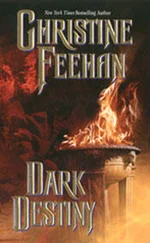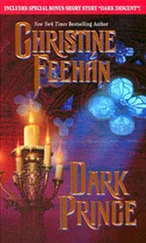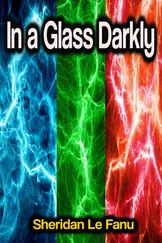Ot élidamet andam szabadon élidadért .
I offer freely my life for your life.
O jelä sielam j-rem ot ainamet és soŋe ot élidadet .
My spirit of light forgets my body and enters your body.
O jelä sielam pukta kinn minden szelemeket belső .
My spirit of light sends all the dark spirits within fleeing without.
Pajńak o susu hanyet és o nyelv nyálamet sívadaba .
I press the earth of our homeland and the spit of my tongue into your heart.
Vii, o verim soŋe o verid andam .
At last, I give you my blood for your blood.
To hear this chant, visit christinefeehan.com/members.
3. THE GREAT HEALING CHANT OF THE CARPATHIANS
The most well-known—and most dramatic—of the Carpathian healing chants is En Sarna Pus (The Great Healing Chant). This chant is reserved for recovering the wounded or unconscious Carpathian’s soul.
Typically a group of men would form a circle around the sick Carpathian (to “encircle him with our care and compassion”) and begin the chant. The shaman or healer or leader is the prime actor in this healing ceremony. It is he who will actually make the spiritual journey into the netherworld, aided by his clanspeople. Their purpose is to ecstatically dance, sing, drum and chant, all the while visualizing (through the words of the chant) the journey itself—every step of it, over and over again—to the point where the shaman, in trance, leaves his body and makes that very journey. (Indeed, the word ecstasy is from the Latin ex statis , which literally means “out of the body.”)
One advantage that the Carpathian healer has over many other shamans is his telepathic link to his lost brother. Most shamans must wander in the dark of the nether realms in search of their lost brother. But the Carpathian healer directly “hears” in his mind the voice of his lost brother calling to him, and can thus “zero in on” his soul like a homing beacon. For this reason, Carpathian healing tends to have a higher success rate than most other traditions of this sort.
Something of the geography of the “other world” is useful for us to examine in order to fully understand the words of the Great Carpathian Healing Chant. A reference is made to the “Great Tree” (in Carpathian: En Puwe ). Many ancient traditions, including the Carpathian tradition, understood the worlds—the heaven worlds, our world and the nether realms—to be “hung” upon a great pole, or axis, or tree. Here on earth, we are positioned halfway up this tree, on one of its branches. Hence, many ancient texts referred to the material world as “middle earth”: midway between heaven and hell. Climbing the tree would lead one to the heaven worlds. Descending the tree to its roots would lead to the nether realms. The shaman was necessarily a master of movement up and down the Great Tree, sometimes moving unaided and sometimes assisted by (or even mounted upon the back of) an animal spirit guide. In various traditions, this Great Tree was known variously as the axis mundi (the “axis of the worlds”), Yggdrasil (in Norse mythology), Mount Meru (the sacred world mountain of Tibetan tradition), etc. The Christian cosmos, with its heaven, purgatory/earth and hell, is also worth comparing. It is even given a similar topography in Dante’s Divine Comedy : Dante is led on a journey first to hell, at the center of the earth; then upward to Mount Purgatory, which sits on the earth’s surface directly opposite Jerusalem; then farther upward first to Eden, the earthly paradise, at the summit of Mount Purgatory; and then upward at last to Heaven.
In the shamanistic tradition, it was understood that the small always reflects the large; the personal always reflects the cosmic. A movement in the greater dimensions of the cosmos also coincides with an internal movement. For example, the axis mundi of the cosmos corresponds with the spinal column of the individual. Journeys up and down the axis mundi often coincided with the movements of natural and spiritual energies (sometimes called kundalini or shakti ) in the spinal column of the shaman or mystic.
En Sarna Pus (The Great Healing Chant)
In this chant, ekä (“brother”) would be replaced by “sister,” “ father,” “mother,” depending on the person to be healed.
Ot ekäm ainajanak hany, jama .
My brother’s body is a lump of earth, close to death.
Me, ot ekäm kuntajanak, pirädak ekäm, gond és irgalom türe .
We, the clan of my brother, encircle him with our care and compassion.
O pus wäkenkek, ot omaśarnank, és ot pus fünk, álnak ekäm ainajanak, pitänak ekäm ainajanak elävä .
Our healing energies, ancient words of magic and healing herbs bless my brother’s body, keep it alive.
Ot ekäm sielanak pälä. Ot omboće päläja juta alatt o jüti, kinta, és szelemek lamtijaknak .
But my brother’s soul is only half. His other half wanders in the netherworld.
Ot en mekem ŋamaŋ: kulkedak otti ot ekäm omboće päläjanak .
My great deed is this: I travel to find my brother’s other half.
Rekatüre, saradak, tappadak, odam, kaŋa o numa waram, és avaa owe o lewl mahoz .
We dance, we chant, we dream ecstatically, to call my spirit bird, and to open the door to the other world.
Ntak o numa waram, és mozdulak; jomadak .
I mount my spirit bird and we begin to move; we are under way.
Piwtädak ot En Puwe tyvinak, ećidak alatt o jüti, kinta, és szelemek lamtijaknak .
Following the trunk of the Great Tree, we fall into the netherworld.
Fázak, fázak nó o śaro .
It is cold, very cold.
Juttadak ot ekäm o akarataban, o sívaban és o sielaban .
My brother and I are linked in mind, heart and soul.
Ot ekäm sielanak kaŋa engem .
My brother’s soul calls to me.
Kuledak és piwtädak ot ekäm .
I hear and follow his track.
Saγedak és tuledak ot ekäm kulyanak .
I encounter the demon who is devouring my brother’s soul.
Nenäm ćoro, o kuly torodak .
In anger, I fight the demon.
O kuly pél engem .
He is afraid of me.
Lejkkadak o kaŋka salamaval .
I strike his throat with a lightning bolt.
Molodak ot ainaja komakamal .
I break his body with my bare hands.
Toja és molanâ .
He is bent over, and falls apart.
Hän ćaδa .
He runs away.
Manedak ot ekäm sielanak .
I rescue my brother’s soul.
Alədak ot ekam sielanak o komamban .
I lift my brother’s soul in the hollow of my hand.
Alədam ot ekam numa waramra .
I lift him onto my spirit bird.
Piwtädak ot En Puwe tyvijanak és saγedak jälleen ot elävä ainak majaknak .
Following up the Great Tree, we return to the land of the living.
Ot ekäm elä jälleen .
My brother lives again.
Ot ekäm weńća jälleen .
He is complete again.
To hear this chant, visit christinefeehan.com/members/.
4. CARPATHIAN MUSICAL AESTHETICS
In the sung Carpathian pieces (such as the “Lullaby” and the “Song to Heal the Earth”), you’ll hear elements that are shared by many of the musical traditions in the Uralic geographical region, some of which still exist—from Eastern European (Bulgarian, Romanian, Hungarian, Croatian) to Romany (“gypsy”). These elements include:
• the rapid alternation between major and minor modalities, including a sudden switch (called a “Picardy third”) from minor to major to end a piece or section (as at the end of the “Lullaby”)
Читать дальше












